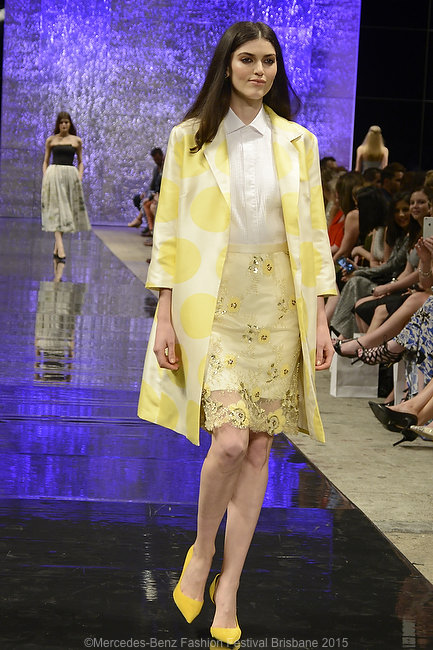Why we do what we do…

Do you know why you do what you do?
When I was in year 8 at school, my report card said…”Elizabeth has a heightened sense of responsibility.”
To tell you the truth, I didn’t think my feelings were that obvious. Many years later I haven’t changed, I just do my thing and take on responsibility for my industry. I want to leave my industry in a better place than I found it.
Why do I do this? Because it matters. It matters a great deal and someone with the right intensions has to step up and make things happen.
History of 33 years in the fashion industry. 30 years as a fashion stylist. 10 years working on MBFF at Styling Director, 2 years working on BFM as Styling Director and now at Indooroopilly Shopping Centre as Head stylist, helping out where I can. (On hold at the moment while the Covid-19 crisis takes over.)
The designers, brands and even large corporations I work with are started by people who took a chance and put their skills and talent to the test by growing a business. My work is to look after them and promote them where I can. To link them with people who will add value and enhance their business. As we can see with the economic crisis now, these brands often have very little financial padding to survive as a business if their customers aren’t buying. They can topple quickly and catastrophically within weeks.

Time will tell us who can survive the economic strife we see now. Clothing designers know very well that they are only as good as their next collection. The customers opinion, attention and support is everything! Brand positioning, design features, pure messaging through shapes, colours, fabrics, price point and the message of sustainability mean the customer understands what you are offering them.
My role is to be of benefit to my clients, sometimes all I need to do is to introduce two of them together and watch the collaboration fly! This is one of my favourite things to do. Recently this happened with Simplicite and Issada Cosmetics. Also with long time friend Pina Fiorenza Bridal and Lucia Josephine which resulted in them working on new collections together.
When I talk to students at design colleges or styling colleges, I tell them to immerse themselves in their chosen industry. Get down and talk with shop staff, talk with designers, show them you care and hope the best for them. You can’t lead in your industry if you don’t really know the players. Get to know them, understand their priorities, their beliefs, what they want to achieve and what they are worried about. Then work out how you can help them. Then work out how you can get paid to do this, so it is sustainable for you.
Designers like Pamela Easton feel concern for their artisans back in India who rely on the work to survive. There are countless more who feel the same and when the masses call for sustainable fashion, these designers are right there in the thick of it, keeping villages surviving in other countries. What will become of the artisans if brands go under now?

One thing I have learnt is that nothing lasts forever. In the fashion industry this is obvious. Brands come and go, a select few go from design school to stardom. This success depends on so many things coming together at the right time and it also depends on tenacity, adaptability, courage and good business. The ability to get up and keep going even when the going is tough, boring, repetitive, scary and difficult. Just show up and do it. Push ahead. Find a way to make it work and surround yourself with people who are valuable to you.
Of course we know fashion isn’t just frocks and champagne. It is business and the best business practices sort the stayers from the overnighters. Australia’s clothing market is worth $16.8 billion, those stats are from earlier this year and now of course they have taken a hit. The past decade show that the global fashion market has grown successfully at 5.5% annually and is estimated to be worth $2.4 trillion. The rise of global brands coming into the Aussie market means that our growth is much less at 0.3%. The danger in not supporting Australian brands is that we will lose them. Fast.
Think about how much stock is required to stock the racks and wonder at who paid for this to be designed, manufactured, marketed, transported and displayed to you. When I hear customers whinge about how much designer clothing costs, I understand their opinion but I don’t agree with it. You get what you pay for.
If you have ever thought that a Fashion Festival is flippant and vacuous, think again. It is business and pure marketing. Creating a reason for customers to shop and a platform for designers to show off new season product. Just like Melbourne Cup race day isn’t just about horse racing, it is about fashion and events as well. It is business.
So keeping all this in mind, I am starting a daily introduction of designers on social media.
Let me know what you think.

Back to WNA Blog
- Filter by category
- Advertising & Marketing
- Archived
- Book Review
- Business Awards
- Business By Social
- Business Consulting & Coaching
- Business Planning & Strategies
- Business Startup
- Business Support & Administration
- Customer Service & Relations
- Design & Illustration
- Digital Technology
- Educational Services
- Entrepreneurs
- Environmental
- Events & Entertainment
- Family Services
- Fashion
- Finance & Insurance
- Food & Hospitality
- Health & Wellbeing
- Home & Garden
- Human Resources and Career Advice
- In The News
- Interior Design & Styling
- International Business
- Legal Services
- Networks, Directories & Networking
- Philanthropy
- Property & Real Estate
- Public Relations & Media Services
- Teaser
- Tourism & Travel
- Wellbeing
- Writing, Editing & Publishing

